#web to print for printer
Explore tagged Tumblr posts
Text
Web to Print for Printer Businesses and Beyond
In the realm of advanced change, customary printing organizations should develop to remain serious. This is where web to print for printer endeavors turns into a unique advantage. By incorporating state of the art web to print ecommerce solutions, organizations can smooth out their activities, upgrade client experience, and lift productivity.

Why is the Web to Print is a Must-Have?
The printing business has moved towards computerization and web based requesting, making web to print for you the ideal answer for organizations looking for proficiency. With a web to print store, print organizations can offer consistent plan, requesting, and customization choices to their clients, guaranteeing higher commitment and rehashing business.
Catering to Corporate Printing Needs
Huge partnerships frequently require mass printing administrations with customized marking components. Web to print for corporate clients empowers organizations to arrange business cards, handouts, and special materials easily. This guarantees consistency in marking while at the same time lessening managerial above.
The Force of Online Print Shop Software
Setting up a web-based presence is critical in the present computerized age. With online print shop Software, organizations can make a natural and easy to understand stage where clients can configure, modify, and request prints easily. Whether it's flyers, standards, or business writing material, having hearty print shop site Software guarantees a smooth work process and upgraded consumer loyalty.
The Benefits of a Web to Print Store
Mechanized Work process: Decrease manual intercessions and improve productivity.
Customization at Scale: Permit clients to plan their own prints easily.
Quicker Completion time: Cycle orders consistently with an incorporated computerized stage.
Cost Productivity: Save money on functional expenses by limiting mistakes and redundancies.
The Future of Web to Print
As innovation propels, web to print will keep on rethinking the printing business. From artificial intelligence controlled plan devices to cloud-based requesting frameworks, organizations that embrace web to print ecommerce solutions will flourish in an exceptionally serious market.
On the off chance that you're shifting focus over to future-evidence your printing business, putting resources into the web to print for printer solutions is the way forward. Begin today and change the manner in which you serve your clients!
#web to print for printer#web to print ecommerce solutions#web to print for you#web to print for corporate#web to print#online print shop software#print shop website software#web to print store
0 notes
Text
i found some wacky way to make borderless printing work...!!! it's not perfect but idk it might b ok enough until i can get a decent guillotine cutter and cut a bunch of sheets at once to size. I'll try experimenting with printing my comics and stuff sometime!!!!!
#blab#like again it won't b amazing quality bc i'm just diying at home but my printer prints decent images and i'm too embarrassed to work with#a printing company for my comics (????)#idk what's up w me having to do some obscure-o method to make borderless printing work tho#couldn't do it in ms word even w borders turned off. maybe they have sth programmed in to make it not work (?)#couldn't do it from the default windows image viewer or wtv bc my printer's dialog box wouldn't open even when i clicked 'more settings'#i had to. save as a pdf. open in a web browser. open the browser's printer dialog. click 'use the system printer dialog' which opens the#windows printer dialog box. click 'more settings' on that which then opens my printer's dialog box somehow in that context only.#check the borderless printing option there. and then print. so CONVOLUTED!!!!!!!!!!!!!!!#idk if dialog box is the right word. idk how to describe computer things. i mean like the printing options window.
16 notes
·
View notes
Text

Static video web inspection system Video Web Inspection system can be applied to high-speed printing equipment, providing high-quality print monitoring pictures with megapixels. The system changes high-speed moving images into "motionless" images that human eyes are easy to accept, and can be partially amplified to timely detect minor printing defects and take appropriate measures to improve the quality of printed materials. It fully meets the needs of high-end printed product monitoring and has won the trust of printing and cigarette package customers. E-mail: [email protected] whatsapp: 008613306265137
0 notes
Text
The Art and Science of Professional Website Designer: Crafting Digital Masterpieces
In the vast and ever-expanding digital landscape, the role of a professional website designer has become increasingly pivotal. A website serves as the virtual storefront for businesses, making a lasting impression on visitors and influencing their perception of the brand. In this blog, we delve into the art and science of professional website designer, exploring the skills, qualities, and expertise that set these designers apart in their craft. At the core of professional website design lies a deep understanding of both aesthetics and functionality. These designers possess a keen eye for design principles such as layout, typography, color theory, and composition, allowing them to create visually appealing websites that capture the essence of a brand. For more details visit our website: www.mgsmarketing.ca
#Web Design Services Toronto#Toronto Website Design Company#Web Development Agency Toronto#Top Graphic Design Companies#Ecommerce Website Design Company#Toronto Web Design Agency#Graphic Design And Printing#Graphic Design Studio Toronto#Freelance Graphic Designer Websites#Graphic Design Agency Toronto#Graphic Design Companies Toronto#Local Graphic Designers#Professional Printers For Graphic Designers#High Quality Printers For Graphic Designers#Graphic Design Printing Services#Graphic Design Company Website#Graphic Design And Printing Company#Digital Graphics Designer#Graphic And Visual Design#Packaging designer and printer#Box designer and printer#Custom packaging toronto#Marketing Graphic Design#Graphic And Web Design#Professional Website Designer#Web Graphic Design#Graphic Design Branding
0 notes
Text
Title: Debt and Dagger Smiles.

Summary: At Kanghak High, she’s the girl everyone turns to—for help, for answers, for secrets. Controlled, calculating, she runs the school from behind her polite smile. Unseen by her, Geum Seong-je starts paying attention—and he doesn’t like what he sees. He likes it too much.
Check this out!@
Author's Note: Welcome to Debt and Dagger Smiles. This story is a slow burn—full of power plays, tension, and the clash between control and chaos. If you're into smart characters, unspoken games, and dangerous chemistry, you're in the right place. Updates will come as inspiration strikes—feel free to leave your thoughts.
Content Warnings: None (for now).
_________☆________��_☆_________☆________

Chapter 1: The Balance Sheet.
At Kanghak High, no one held the web of whispers tighter than her.
She walked the halls with a quiet, calculating ease—her uniform always crisp, her eyes always focused, her phone never more than a breath away. Most students thought of her as approachable, reliable, the kind of girl you’d ask for help with a project or directions to the nearest printer. And sometimes, she said yes. But only after calculating the weight of the favor.
Because nothing came free.
She didn’t offer kindness out of softness. Her generosity was strategic. She said yes when it mattered—when the person asking held potential. A future teacher’s pet. A student council officer. Someone whose name would matter on a list. Those who received her help might think they got lucky.
They didn’t.
They were already in her pocket.
She didn’t waste time with the Union. Despite their presence in the school and the vague air of intimidation they carried, she saw them as distractions. She wasn’t trying to control through fists—she was building something smarter. Cleaner.
In her notebook, color-coded and organized to military precision, she kept track of every test date, every exam format, and every student in the top ten. Her grades were near perfect, and she made sure to keep it that way. While others stayed out late or fought behind buildings, she was home by eight sharp. Her family didn’t tolerate disobedience, and she didn’t test their limits.
Not publicly.
What no one knew was that she ran the school blog.
Anonymous. Undefinable. Ruthless.
She didn’t write everything, of course. She barely wrote at all. But she knew what was happening—who was cheating, who was skipping, who was crying behind the lockers. Gossip reached her before it hit group chats. Secrets traveled faster when people trusted you, and she made sure everyone trusted her just enough to slip up.
Geum Seong-je watched her from the corner of the school convenience store.
She didn’t notice him. Not because she wasn’t observant, but because he wasn’t in her circle. Not worth tracking. Not yet.
He’d seen her around, of course. Everyone had. But this was the first time he paid attention.
She stood in front of the drink fridge, scanning the labels like she had a spreadsheet in her head comparing caffeine levels. Her movements were efficient, deliberate. No wasted steps. She picked a small can of black coffee and a rice ball, paid in coins, and dropped the receipt in her bag.
Not once did she smile.
When another student tried to stop her near the exit—some third-year begging for help printing a missing assignment—she tilted her head slightly, brows pinched as if already calculating.
“What do you do again?” she asked.
“I’m vice secretary of—”
“Of the eco club,” she finished. “Right. You owe me. Done. Send me the file. I’ll print it. But you’re collecting survey data for me next month. No complaints.”
The girl nodded quickly.
She walked off without confirming. The favor was made. The debt recorded.
Seong-je didn’t move. He leaned back into the shelf, hood pulled low, watching her disappear past the glass doors.
Interesting.
He’d heard rumors before—of how she always had the answers to tests before they dropped, how her notes circled among the elite students, how she knew when a relationship ended before either person confirmed it. He’d assumed most of it was exaggerated.
Now he wasn’t so sure.
She didn’t just survive in this school.
She ran it—quietly, efficiently, and with terrifying precision.

--------------------------------------------------
End of Chapter 1.
Chapter 1 has been updated to third-person POV.
Thank you for reading🫂.
#geum seong je#geum seongje x reader#wolf keum#weak hero class two#lee junyoung#weak hero x reader#kdrama
289 notes
·
View notes
Note
Do you happen to have any advice on looking for art to hang on walls? Originals, prints, doohickeys; I find a lot of antique malls tend to have stuff for shelf display and not a lot of wall decor. I thought you might have a few tips?
Stuff on walls? That's where I'm a viking!
Facebook marketplace, estate sales, auctionninja.com, etsy, and eBay are my primary sources for finding wall decor. I usually only find original prints at antique malls if that is what the booth specializes in.
But also consider branching out. If you are into shelf decor, get some wall shelves!
I have found that antique malls are less likely to have shelving, but antique *fairs* are a different matter.
If you like a pre-1960s style, wooden shelves are in abundance, from teacup/saucer shelves, to various one-offs:


Salvage is also fun to use to display things -- see my printer tray above and church pew hymnal racks:

Back on the art side -- I highly recommend hunting down artists you enjoy and commission from them or buy their prints, pins, etc:


You can also look on etsy or do a web search for places that offer high quality scans of public domain art. A lot of museum websites also have high quality downloads of their collections. Print and frame these yourself.


And don't forget, you can slap anything on a wall, from the functional to the... uh, well, a hand scythe *is* also functional, technically...



Hope this gives you ideas. But when it boils down to it, estate sales and marketplace have been my best sources.
193 notes
·
View notes
Text
Building a Time Machine to Review Lancer

This article begins with Snow completing a time machine and traveling back to the year 2006. Snow appears in her childhood bedroom with her Fourteen-Year-Old Self [from now referenced as 14].
Snow: I’ve come from the future to ask you some questions. I’m struggling to review this book.
14: I become a girl?
Snow: We don’t have time for that. I’m only here for the book.

Snow holds up Lancer, the 2020 Mecha TTRPG from Massif Press. Funded on kickstarter in 2019 to the tune of $432,029 on the back of a long beta-phase, facilitated by the Lancer subreddit, and the vibrant illustrations of Tom Parkinson Morgan, creator of Kill Six Billion Demons, the wildly successful web comic.
Snow doesn’t tell this to 14 because it would take too long to explain that, in the future, people could have a job like that and make that kind of money. And if 14 knew, then the entire trajectory of her life would change.
14: Makes sense. It’s really big. What’s a Lancer?
Snow: Like 500 pages, but It’s not important. It’s like a Gundam.
14: Like Gundam SD? Zaku Zaku hour?
Snow: No.
14: Like G Gundam? With the horse guy?
Snow: No. I thought you were cooler than this.
14: Shrugs. So it’s just a mecha thing? Mechs are cool. That art’s really sick. Can I be that guy on the front?
Snow: Ideally. It’s like 4th Edition. Has that come out yet? Never mind, you’ll like it. Here. Hands 14 the book. I want you to read through it and tell me what you think.
14 opens the book, flipping a few pages, then cuts the book in half, flipping quickly through the front and middle.
Snow: What’s that? What’re you doing?
14: I never read the front stuff. I tried with D20 Modern, but it’s all just kinda boring. I wanna make a mech. In the Naruto game we played, making your ninja was the best part.
Snow and 14 sit on the floor with some paper and make their mechs.
Snow: It says here that all new players start with the same basic frame, the Everest.
14 flips to the Everest.
14: There’s no picture for it.
Snow: Well, my guess is that they let you make it look however you want since everyone starts with it.
14: The others have pictures though, and look how cool they are. The Blackbeard, the Drake, the Nelson. I wanna be the Nelson. Look at the cape!
Snow: Can you make sense of the stats and stuff?
14: I mean, it mostly makes sense. I don’t know what Repair Cap is. Or Heat or anything like that. But the traits are cool. Boost is probably an action. Immobilized or Slowed make sense as conditions. And the Skirmisher ability is so cool. I’m like, gliding through the battlefield with a spear, cutting down mechs and backflipping away.
Snow: Okay so…
Snow bookmarks page 140 with a finger and flips back to page 30. She does this several times before reading through to page 36.
14, bored, tries to draw a mech.
Snow: Um, ah, I see. So these things are your stats, like in Star Wars or Pathfinder.
14: What’s Hull?
Snow: That’s like your strength. It says “Roll Hull when smashing through or pulverizing obstacles.” But you won’t know what your Hull bonus is until you make your pilot. They get mech skill points to put into your mech stats. We need more bookmarks if we’re gonna do this..
14: Mom’s got the printer. A lot of books are big and confusing, so I just print off the important pages. You really only need like 20 of them to figure out the game I bet.
Snow: Speed is movement, Evasion is kind of like Armor Class, Sensor is your range to detect enemies and use hacking things on them, and E-Defense is Armor Class for hacking, but Heat is like HP for hacking, and then Stress is like Structure but for hacking, so, like, Structure and Stress are, like, if you drop to 0HP, you lose a Structure and regain all HP and kinda do it all over again, so it’s like extra lives, except you might get a scar or something, same for Stress–
14: Mom’s got the printer.
14 sits at a buzzing Dell computer on the enclosed front porch while the bulky printer spits out some pages in jagged black and white ink.
Snow reads about combat.
Snow: Do you still have the old gundam figurines? I think we put them in the basement. I don’t remember when.
14: I’m not sure, why?
Snow: First of all, don’t let mom throw them away. She’s gonna throw away a lot of your stuff and you’ll wish you still had when you get to where I am. Secondly, we can use them for combat. It’s grid-based, so we’ll have to figure that out. Get a map or something.
14: I hate grids.
Snow ignores 14 and continues to read.
14: Figure all that out yet?
Snow: Yeah, I think so. I think it’s actually really simple, just that everything’s spread out. You’re just rolling a D20-plus-stuff against the static numbers to see if you hit. Then your attachments can raise the static numbers. Accuracy and Difficulty are like additional modifiers that can happen with cover or if you’re affected by a status. It’s just like D&D. But with mechs.
14: It does just kinda give you a buncha numbers.
Snow: We also just flipped to the mechs though, so–
14: But that’s why we’re here though, right? I don’t want to read about all this random stuff. I want to take the mechs and play the game in as little time as possible. If I have to sit and explain all this to the guys, they’re gonna be so bored. They’d rather play Star Wars or something.
Snow: You think it would be better if you opened the book and it was just mechs right up front?
14: It sounds kinda silly when you say it like that. It’s more that, it being a big book you already know it’s going to be boring, right? They always are. I feel like the good version of such a big, mecha book is that it would be filled with mechs. It should be filled with pre-built pilots and just, like, the rules for making your own if you want to. The art is so cool, why would you want to start by building your own mech when you could pick this cool gunslinger one? If I opened this book and it was just like “pick a pilot and pick your mech, here’s a grid so you can fight and here’s the one page with all the basic rules on it,” then I could play it right now and we wouldn’t be sitting here waiting for these pages to print.
The printer stutters.
Snow: Would it make you feel any different if I told you this was made by just two people?
14: What? Really? Why?
Snow: Well, not only two people. Miguel Lopez and Tom Parkinson Morgan wrote and designed the whole thing. Tom and a bunch of others did the art. It was edited by Melody Watson and the layout was done by Minerva McJanda.
14: I don’t know who any of those people are.
Snow: It was a small team, is what I’m trying to say.
The printer whirs to a stop.
14: But look, I just put together the important parts so that we can actually play. And I’m fourteen.
14 and Snow continue talking, sitting at the dining room table.
Snow: What about the GM section? Won’t you need it to run the game?
14: No. I’ve seen Gundam Seed and Patlabor and Appleseed. I’ll just do that but with, like, a Death Star or something.
Snow: Just take a look. I want your opinion on it.
14 skims the section.
14: GM Principles. Facilitate fun, no duh. Renounce control? That’s a no brainer. Just last week the group killed the big bad in the Star Wars campaign in the first session. Funniest shit that’s ever happened.
Snow: Haha, I remember that.
14: Consider your players… I’m sorry, but what is this? Is this book trying to teach me how to be a good friend to my friends?
Snow: Well, maybe you’re not playing with friends?
14: Why would I do that? And why would playing with strangers make me act like a jerk all of a sudden?
Snow: Shrugs. Remember that game at the card shop when that new worker ran a game and was killing everyone’s characters for fun?
14: Yeah…that sucked. But that guy was just a jerk. He got fired for stealing Magic cards or something, I think.
Snow: Well, maybe the idea is that if this is in the book, stuff like that won’t happen or can be stopped. Y’know, like a kid reading this might feel comfortable enough to speak up.
14: The only reason we didn’t speak up was because he was an adult. We knew he was a jerk the whole time, we just wanted it to be over so we could go do something else. Maybe if adults weren’t assholes things would be better.
Snow: I understand.
Beat.
Snow: I kinda like the questions here under Eliciting Responses. Those are actionable and could be nice for awkward pauses.
14: Yeah, those are alright.
14 and Snow sit at the table having just finished making pilots.
Snow: How’d you like that?
14: That was kinda fun. The pilot portraits are really cool. There’s a lot of cool art in here that makes me really want to be those people. The backgrounds remind me of D20 Modern, but they’re actually useful here. I like the Triggers and I want to make a bunch of them. I can’t wait to see what the group ends up making.
Snow: My favorite part is that all skill checks are just trying to beat a 10. I’ve stolen that for some of my own games.
14: Wait, you make games?
Snow: Yeah. It’s sort of why I’m doing this interview with you.
14: Oh, so this is your job?
Snow: Thinks for a moment. No, this is just sort of a compulsion. But my job is making games. I’ve made a few.
14: That’s really cool. I didn’t even know that could be a job.
Snow: You’re gonna like it. It’ll be a while before it happens though. You’ve gotta go through some things first.
14: Ignores her. But yeah, I really like the pilot stuff. I could honestly see us using that for its own game. I don’t know, my mind has like six different ideas for a campaign right now. You could use this as like pilots for fighter planes, or race cars, or like even some kind of Code Lyoko situation.
Snow: Is that important to you? Being able to reuse ideas or think of new ways to use what’s in the book?
14: Well…I think it’s more that the book showed me an easy way to make ideas I already had into a reality. Like, we always wanted to run a zombie game, but with D&D it didn’t feel right. After we read D20 Apocalypse though, it felt more natural.
Snow: That’s a good thought. What about Section 2: Missions and Downtime?
14: I probably won’t use any of it.
Snow: Why not?
14: I don’t know. Like I said before, I’ve seen Gundam. I already know the stories I want to have. I think that’s the easiest part.
Snow: What’s the hard part then?
14: Um, maps, enemies. Cool rival pilots. Things that give me more ideas. I don’t really need it to tell me how to do a mission or whatever. I’ve watched Saving Private Ryan and I’ve played Medal of Honor, so… the only thing missing is the inspiration. Stuff I couldn’t think about by just sitting and watching T.V.
Snow: And what about the downtime actions?
14: I don’t know.
Snow: No opinions?
14: Shrugs. Same answer, I guess.
Snow: Do you think the rest of the book is used well?
14: I don’t really know what you mean by “used well.” But it’s a lot of information to parse. They can’t expect I’ll read this all at once, or even read it all before I play the game. There’s so many templates and different types of NPCs. Tons of symbols for weapons and attacks. It’s just a lot of information that my brain can’t really make sense of right now.
Snow: Do you wish it were simplified?
14: I think we both agree that the game is rather simple, the actual rules are easy to learn, but the way it’s presented makes it hard to grasp.
Snow: Yeah, I agree. But when I actually stop to read any of it, the ideas are pretty good and usable. Like, reading the Sniper NPC gives me an idea for an encounter. But you’re right, it is A LOT. But I don’t think it’s any more or less than, say, what the Monster Manual has, for instance.
14: Yeah, but there’s so many optional things. The Monster Manual really just gives you one instance of a thing, so you can take out, like, a dragon, and just use it right then. You don’t have to build it or be selective about it. I don’t really know if one way of doing it is better, I just know that I feel overwhelmed by the book right now and will probably just make a lot of stuff up on the fly as we play.
Snow: I understand.
Beat.
Snow: I wish mom would take you to the doctor.
14: Huh? Why?
Snow: It’s nothing. There’s so many things I wish I could tell you–so many things you’ll learn between now and when you become me–
14: A girl?
Snow: Unphased. And you’ll wish that maybe someone paid more attention. So many things that would help you make sense of who you are and how your brain works.
14: Wait, are you crying?
Snow: No, no.
14 and Snow run a few rounds of combat, just the two of them. 14 pilots the Nelson, decked out with a Custom Paint Job, Expanded Compartment, and Manipulators. The last of 14’s SP is spent to get the Type-1 Flight System. So now the Nelson counts as flying while it boosts towards enemies, War Pike at the ready. Sides strapped with two pistols and a shotgun in case things get hairy.
Snow builds out Horus’s Pegasus model but doesn’t use it for the combat. Instead, they control a few squads of infantry and an Archer NPC with the Flier Ship Template.
Snow sets the scene: 14 is sent behind enemy lines to take out a ship that holds a nuclear armament. It’s set to leave the atmosphere this evening and must be grounded.
The fight is slow and methodical. They listen to the Halo 2 Movement Suite the entire time.
Snow: That was fun.
14: Yeah, that was epic. I don’t normally like grids, but it kinda makes sense with mechs. It’d be really fun to, like, be the pilot and do Gundam Wing stuff before getting into this big conflict that’s, like, really intense.
Snow: I bet it might get a little monotonous with all the guys here.
14: Naw. They love it when combat takes forever. I think it’ll be even better with more people. You can use strategy and talk to each other about where you’re gonna go and who you’re gonna attack. Coordinate stuff. I’m sure there’s a limit to how many people you can add before it’s too much, but that’s true of everything.
Snow: Good point.
14: I can’t wait to play some more tonight.
14 and Snow sit quietly for a moment.
Snow: Well I should really get back. Do you think I should leave the book with you or take it back with me?
14: If you need it, you can keep it.
Snow: It’s your choice, kid. I came here for you.
14: I’ll definitely keep it then.
Snow hands over the book to 14. They don’t hug or anything. They just stand there as awkward reflections of each other.
Snow: So…you like it after all?
14: Yeah. It’s really cool. I’ll probably read it all some day. Or not. I’ll probably just make up the stuff that makes my brain all fuzzy.
Snow: Good plan.
Snow says goodbye to 14 and steps back through into the present.
When they return, on their desk is a beat-up copy of Lancer. The pages are torn, some removed completely. Spine bent. Water damaged. Notes written in the margins. Black marker crosses out enough to make it look like poetry.
And atop it, a solitary Gundam figurine sits waiting.

You can find lancer on itch.io.
If you enjoy writing like this, consider supporting my patreon and following my substack, where this and many more articles have been available already~
124 notes
·
View notes
Text
Writing Notes: Book Cover

“Don’t judge a book by it’s cover!” We’ve all heard the phrase and we all know that’s impossible. Because the cover of a book is the first thing a potential reader sees—it should stop them in their tracks. It’s a very powerful marketing tool; having a well-designed book cover is crucial.
Tips for Making a Great Book Cover Design
Using more than two to three typefaces on a cover is discouraged, as it can look really messy.
Keep things simple. Your cover will be in a sea of other covers so try to keep your design from getting muddy and make sure it stands out.
Show your designs to people who have a design eye and/or you trust. It’s great to get feedback.
If you hire a professional designer, write a brief and send them info. Be really clear on what you want. Designers usually do a certain number of design rounds included in the agreed upon fee and any extra rounds of design will be extra.
If you hire a professional designer, they will likely have ideas about printing and may have connections to printers. They are a resource so don’t forget to ask questions.
Don’t forget: a book cover is an important part of selling any book. Whether you decide to do it yourself or collaborate with a professional, pay special attention to this part of the process, as a great cover goes a long way.
6-Step Guide: Professional Book Cover
STEP ONE Generate Ideas. Look around at book covers you like. Go to a bookshop and peruse what’s currently happening in book cover design. Take notes of what elements you like on the cover image. A certain typeface? Color? Do you prefer an image or an illustration or something purely typographic on the cover? Another option is to create a mood board. You can use a platform like Pinterest or Evernote, or create a folder on your desktop, and pull book cover inspiration from the web. While you’re gathering inspiration, keep in mind what genre your book is and what kind of book design feels appropriate.
STEP TWO Find a Designer (Who Could Be You!). Do you have design skills? If so, your next step is to begin layouts and mock-ups of the covers. You should use whatever software program you are comfortable with. Most professional book cover designers use a program from the Adobe Creative Suite:
InDesign. InDesign is a multi-page design platform but can also be used for single page design.
Photoshop. Used to manipulate and experiment with photography.
Illustrator. Illustrator is a vector-based program, which means you can create graphic art that can be scaled up or down without loss of quality.
Photoshop and Illustrator. These can also be used together as you can bring your Photoshop file into Illustrator to set the type after you have worked with your cover image.
If you don’t have design skills, now is a great time to hire a book cover designer. The first step is to figure out what kind of budget you have for this. A designer’s fee will range depending on their expertise. Get a figure in mind and then write a design brief which should include the book specs:
Size
Print-run
Intended audience
Where and how the book will be published
Anticipated publish date
You should also include a summary of what the book is about and what you are looking for in a cover. Also share the inspiration you’ve gathered with the designer.
If you don’t have design skills but want to create the cover without the help of a professional, there are a few software programs you can use, such as Canva or 100 Covers, design tools that allow you to DIY the cover (for free or a fee).
STEP THREE Decide on the Dimensions. If you’re self-publishing and printing with a local printer you can work with them to make sure your book dimensions will fit on their printer (remember a book prints front, back, and spine in one sheet of paper). It’s also a good idea to find examples of books whose size you like and feels good to hold. Use that as a jumping off point for your book.
Book Cover Dimensions List. If you are printing for a specific market, from print to ebook, here is a handy list:
Amazon Kindle Direct Publishing File Format: JPEG or TIFF Cover Size (Recommended): 2560x1600 pixels Cover Size Requirements: between 1000x625 pixels and 10,000x10,000 pixels (one side must be at least 1000)
Apple iBooks File Format: JPEG or PNG Cover Size (Recommended): 1400x1873 or 1600x2400 pixels Cover Size Requirements: at least 1400 pixels wide
Barnes & Noble File Format: JPEG or PNG Cover Size (Recommended): Rectangle height and width, at least 1400 pixels Cover Size Requirements: Min. 750 pixels height and width
Kobo Books File Format: JPEG or PNG Cover Size (Recommended): 1600x2400 pixels Cover Size Requirements: Min. 1400 pixels width
Smashwords File Format: JPEG or PNG Cover Size (Recommended): 1600x2400 pixels Cover Size Requirements: Min. 1400 pixels width Draft2Digital
File Format: JPEG Cover Size (Recommended): 1600x2400 pixels Cover Size Requirements: Tall rectangle
STEP FOUR Choose Your Style
Photo-based cover. If you’re creating an photo-based book cover, you’ll need to source stock imagery. There are lots of great resources online to find stock imagery including ShutterStock, Getty Images, and Adobe Stock. (Keep in mind: most photography archives require payment to use their images. Always investigate the copyright of images you’re interested in using.) Look for images that convey or allude to your book’s genre. You can use programs like Photoshop to manipulate your image, making it black and white instead of color or cropping it in a certain way.
Illustration-based cover. If you’re considering a more graphic approach to your cover, Illustrator is the tool to use. You can bring hand-drawn drawings into it and outline them to create scale-able, high-res illustrations which you can manipulate within the program. You can also create shapes, patterns, experiment with typography within illustrator and play with color, transparency, size and much more.
Typography-based cover. Finally, many successful book covers use typography as the main graphic device. This takes some skill and knowledge of typefaces, the historical context of a typeface, and how to manipulate it thoughtfully. That said, using type as a graphic can be very impactful.
STEP FIVE Pick a Typeface (Font). No matter what kind of cover you are designing, you are going to need the title of the book and the author’s name on the cover. As mentioned above, picking an appropriate typeface is very important. You want to pick something that feels right for your book—is it a sans serif or serif? A heavy weight or lighter weight? You want to make sure it’s not something with a lot of baggage, like Comic Sans or Papyrus. It is a good idea to actually do a little research on when, where, and who your typeface was designed by to give you context and feel out if it will be right for your book. You might also consider using up to two different typefaces, one for the title and one for your name. A serif and sans-serif mix can give a bit of contrast and visual interest. There are some typefaces that pair really well together. Check out the website TypeWolf to get ideas of what fonts pair well together.
STEP SIX Test, Tweak, and Repeat. Once you have a few versions of your cover, print them out on your home printer and take a look with a critical eye. Does the type size feel chunky? Too bold? Too small? How does your image look? Is it cropped right? Are the lines of your illustrations too thin and not showing up? Go back and refine your design and then repeat! Don’t forget to look at your book cover as a small thumbnail as well. People are on their mobile phones and you want to make sure your cover still stands out and is impactful.
Book Cover - serves as your first impression with potential readers—and though book covers don’t always look the same, they do tend to contain the same essential elements.
Design standards may be different in the world of traditional publishing than they are in self publishing, and book cover templates for physical paper books may differ from those of ebooks—but they all serve the same purpose.
Some Functions of a Book Cover
A book’s cover provides essential information. At its most elemental, a good cover includes a book’s title, the author’s name, the publisher, and the price.
A good cover offers clues about your book’s content and tone. Your cover design indicates whether your book is a work of high-minded literary fiction, a pulpy page turner, or a compelling work of non-fiction.
A front cover reveals a book’s genre. You can usually tell if you’re holding a thriller, a memoir, a sci-fi epic, or a nineteenth century classic just by looking at a book’s cover art and typography.
A back cover offers broader context. It may feature quotes from reviewers and fellow authors. Softcover books may contain a plot summary or author biography on the back; those summaries and bios are typically moved to the inner flaps of a hardcover book.
How to Hire a Professional Book Cover Designer
Book covers are marketing materials, and a well-designed professional cover can make your book stand out among the competition. If you want someone with expertise in the realm of cover design to work on your book, you may want to hire a professional book cover designer. Here are some steps to consider when hiring creatives to design your book cover:
Hire a cover artist. A cover artist produces the cover art and imagery that will appear on your book cover, either on their own or with heavy input from an author or publisher.
Hire a graphic designer. Certain graphic designers specialize in layout; they incorporate cover art that you provide them—whether that’s an original illustration, photograph, or even a stock image—into the overall design of the cover.
Find a cover designer online. Reedsy is one of a number of online resources for independent authors, self-publishers, and anyone connected to the world of books. Many professional book designers list their services on Reedsy.
Use your personal network. Seek out writers’ groups, either locally or on Facebook. In these groups, people share professional referrals and help support one another when a member has a new book in the works. A group of like-minded individuals can be an invaluable resource when creating your own book cover for the first time.
When to Call a Pro:
You have a budget (a designer’s fee will vary depending on experience and location).
You have enough time to work with the designer.
You have a clear idea of what you want or at least what you don’t want.
You don’t have any design skills.
You don’t want to invest in the design software.
Your book isn’t selling.
How to Design a Book Cover Yourself
If you don’t have the budget for a pro designer or just have a DIY itch you want to scratch, it is easier than ever to design your own book cover. While it may not be quite as rudimentary as when you covered your textbooks in a brown paper bag back in fifth grade, modern technology has made cover image design accessible to anyone with a computer. Here are some tips:
Use a template. There are numerous websites that offer book cover templates and step-by-step tutorials covering basic cover design skills. Some even have a free book cover creator tool, along with cover ideas, design tips, pre-made design templates, and digital cover image tools.
Use standard design software. Book covers can also be made using standard home computing software including Photoshop, Microsoft Word, and even (with a little sweat equity) Google Docs. This is particularly easy if you are importing a pre-made cover image from another source.
Make a prototype. The process for assembling a book is straightforward and satisfying. If you want to test out how your book will appear in print, you can learn to bind a copy yourself.
When to DIY:
You don’t have any budget for design.
You have design skills to do it yourself.
You have the design software.
You have a template and know exactly what you want.
You have people with an eye for design that can guide you.
How to Make a Hardcover Book
So you’re ready to bind your own book. Here’s what you’ll need:
Content, of course.
Uncoated printer paper for book pages
Decorative paper for endpapers, such as wrapping paper or cardstock
Davey board (aka bookbinder’s board), thin chipboard, or cardboard for the book covers
Craft knife
Polyvinyl acetate (PVA) glue such as Elmer’s glue
Hot glue gun and glue sticks
Ruler or straight edge
A long stapler
Thin fabric or book cloth for cover
Binder clips
Thick decorative paper (optional, for dust jacket)
Paper trimmer (optional, for trimming book pages)
Paintbrush (optional, for spreading glue)
There’s more than one way to bind a book, and you’ll find tons of great tutorials online for making homemade books, including Japanese bookbinding and perfect bound softcover books. The most popular style of hardcover book binding is called case binding, which is traditionally done by stitching pages together with thread. Here is how to make a hardcover book step-by-step—no sewing or special materials required:
Assemble the content. The number of pages and the type of paper you work with depends on whether you’re binding a novel, a full-color photo book, or a sketchbook. Familiarize yourself with the format by taking some hardcover books down from your bookshelf and observing how they were made.
Format your pages. If you’re creating a blank book, you can skip this step. If you’re printing a book with text, you'll need to format the text so that you can print it into a book. You can get help with this at a copy shop, or you can download book design software and print at home. Eventually, you’ll end up with a PDF with a page count. This page count has to be divisible by four so that your book can be bound as folios made up of eight sheets of paper (32 pages) each. You may need to add some blank pages at the end of the book to keep your page count correct for the folios.
Print and fold. Once all of your pages are printed, fold pages in half and stack eight within each other, making sure the pages are in the correct order. Staple the folios together in the folds, alternating the location of the staples so that you don’t end up with a bulge in the spine.
Bind your folios together. Arrange all of the folios in the correct order and flatten them between heavy books. Once your folios are flat, it’s time to glue them together. Hold the folios together with binder clips and use a glue gun to glue the folios together along the stapled edge. This will become your book’s spine. Be careful not to overdo it on the glue: Use just enough to keep the folios together. Before the glue cools, use a thin piece of fabric to cover the spine only.
Even out the pages. Carefully trim the edges of the pages with a paper trimmer or craft knife, if needed.
Make the hardcovers. Cut two pieces of cardboard for the front and back covers of your book. For the spine, cut a piece of cardboard that is the same height as the front and back covers, with a width equal to the thickness of the spine plus the front and back covers.
Attach the hardcovers. Paint the cardboard (both covers and the spine piece) with a thin layer of PVA glue and attach to the cloth you’ll use to cover your book, leaving a space between the covers and the spine equal to one and a half times the thickness of the cardboard. Let dry.
Assemble the book. Use PVA glue to attach the fabric-lined spine of your bound folios to the cardboard spine. Keep the book propped up between other books while you wait for it to dry.
Attach the endpapers. Trim the paper lining so that it’s twice the size of the first page and fold it in half. Paint glue onto the inside of the front cover and the front page, and attach paper lining. Repeat with the back cover.
Make the dust jacket. If you’d like to cover your book with a dust jacket, measure a piece of thick decorative paper as tall as your book and as wide as the entire book, plus a few extra inches to fold over the edge of the cover. Fold the dust jacket over the bound book. Lay another heavy book on top of it to help the dust jacket keep its shape. This is the place to add a cover design, if you’d like.
Sources: 1 2 3 4 ⚜ More: Notes & References ⚜ Writing Resources PDFs
#books#book cover#writing tips#writeblr#booklr#literature#writers on tumblr#writing reference#dark academia#spilled ink#writing prompt#creative writing#bookblr#writing inspiration#writing ideas#writing advice#on writing#light academia#writing resources
118 notes
·
View notes
Text
From a comrade:
Since a mass exodus is occurring of people leaving FB & related apps, I'd like to prematurely and imperfectly announce the project I'm working on with help from my partner. Proudly announcing, as a work in progress, The Little Punk Library!
"The Little Punk Library is a project devoted to making information accessible and available pending the obsolescence of the internet (especially social media) and continued censorship online.
We aim to collect books, printed articles, magazines/zines, and more, in order to help our community access information. With the help of our trusty printer/scanner, the postal system, and our own creative brains, we hope with the resources we provide we can be an asset to our community both near and far. Some of the resources we’d like to provide include an index of informational and instructional articles, information packets and learning resources, a collection of fiction and nonfiction books for potential lending (still figuring the mechanics out of how this will go), magazines/zines and chapbooks, and more.
We are also interested in potentially creating a lending library for DVDs, CDs, vinyl records, and other physical media, but it is not our current focus.
Please join us on Bluesky @LittlePunkLibrary (our only social media currently, link is below) for updates."
https://bsky.app/profile/littlepunklibrary.bsky.social
I'm working on putting out more information available through Bluesky and a web page that I'm having technological issues with but am hoping to get up and running soon. Ultimately my goal is to create a zine or even just a page of information about how to access The Little Punk Library so that it will be put on paper and not just online and can be exchanged via snail mail. Currently it is not yet accessible but with what resources I have available I'm hoping it will be soon.
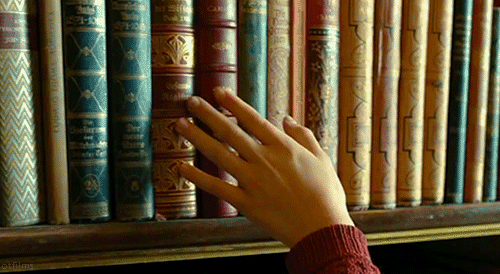
#these tags are hopefully for folks to find and engage with this#punk#punx#punk rock#folk punk#diy punk#freedom of information#book banning#banned books#library#librarian#zine#zinester#zines#poetry#lgbt#queer#history#lgbtqia#mutual aid#direct action
83 notes
·
View notes
Text
Reckless | CS55
Summary: Via finds herself caught up in office politics and encounters Carlos Sainz Jr., the intimidating son of her boss. Despite her initial reluctance, she is drawn into a web of intrigue surrounding the Sainz family and their business empire. As tensions rise and secrets unravel, Via and Carlos grapple with professional challenges, personal relationships, and the allure of forbidden romance. Via must navigate the complexities of power, ambition, and desire, ultimately confronting difficult truths about those around her in a world where appearances can be deceiving and loyalties tested.
Warning: Violence, blood, alcohol, smut, fluff, guns
Pairing: Carlos Sainz x OC (Via Driscoll) - appearances from other drivers
Masterlist
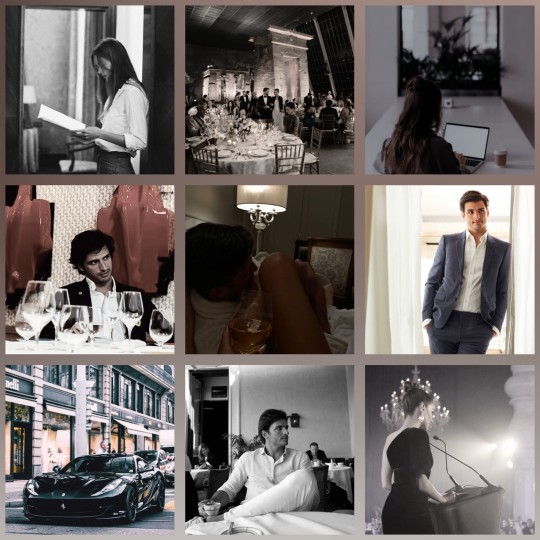
Chapter 1
The bleak London sky seemed to reflect Via's mood as she sat in her office, the persistent rain tapping against the window panes like an incessant reminder of her dissatisfaction. She longed for the comfort of her home, envisioning herself cocooned in her favourite pyjamas, a bowl of popcorn in hand, escaping into the world of a movie. But duty called, and she found herself tethered to her desk, the glow of her computer screen casting a harsh light on her weary face.
Via's gaze drifted from her monitor to the expansive windows that framed her workspace, offering a panoramic view of the dreary cityscape below. The rain streaked down the glass in rivulets, distorting the already dismal scene outside. With a sigh, she swirled her chair to face the window, mesmerised by the hypnotic dance of the raindrops.
Her office, part of the executive suite, was a realm of corporate austerity softened only by the occasional flourish of personalization. Across from her was Eleanor's desk, a colleague whose meticulously organised desk offered a stark contrast to Via's own desk, cluttered with documents and folders. Beyond them lay the hushed confines of the boardroom, its sleek furnishings a testament to the gravity of the decisions made within its walls. And nestled at the heart of it all, concealed behind a frosted glass door, was the sanctum of the CEO, a figure whose presence loomed over the entire floor.
The executive suite was a realm unto itself, delineated from the rest of the office floor by imposing frosted glass panels. These barriers, both physical and metaphorical, served as a symbolic boundary between the realm of power and influence and the humbler domains of the rank and file.
As the sudden flash of lightning illuminated the room, Via instinctively recoiled, her chair scraping against the floor as she sought refuge closer to her desk. The starkness of her workspace mirrored the dreary weather outside, save for a solitary splash of colour—a bright red ribbon adorning her computer monitor, a token of whimsy amidst the monochrome.
Before Via could fully regain her composure, the jarring chime of a message tone shattered the silence, dragging her attention back to the task at hand. With a resigned sigh, she dove back into her work, sifting through the influx of emails that clamoured for her attention. Among them, a cluster of documents awaited Julia's scrutiny, prompting Via to spring into action.
With a sense of urgency gnawing at her, Via swiftly printed out the documents, the whirring of the printer adding a discordant rhythm to the otherwise hushed ambiance of the office. Clutching the papers in hand, she hastened down the main passageway, her footsteps echoing off the sterile tiles with each resounding click of her heels.
Despite her distaste for the clamour her heels inevitably caused, Via pressed on, her posture rigid and purposeful as she navigated the familiar corridors. Straightening her navy blue pencil skirt and smoothing down the crisp lines of her pearly white blouse, she maintained a facade of professionalism, unwilling to betray any hint of vulnerability to the world around her.
As she finally approached Julia's desk, Via's pulse quickened with a mixture of apprehension and determination. With each step, she drew closer to the epicentre of the office's bustling activity, her resolve unyielding even in the face of the tempest raging both outside and within.
“Hey, Jules.” Via greeted Julia with a warm smile, hoping to inject a bit of brightness into the weary atmosphere.
“Hi, Via.” Julia replied, her voice laden with fatigue, betraying the toll that the relentless demands of their profession had taken on her.
“I have some paperwork Eleanor wants you to go over. Mostly just details for the upcoming gala.” Via nodded sympathetically as she approached, presenting the stack of paperwork she had carried with her.
Julia's shoulders slumped slightly at the mention of more work, her sigh echoing the sentiment shared by many in their line of work.
“The work never ends, does it?” She lamented, a weariness evident in her tone as she prepared to delve once more into the endless stream of tasks that awaited her.
“Sadly, no.” Via echoed with a resigned sigh, her own weariness mirroring Julia's.
“I've actually been meaning to call you over.” Julia interjected, her tired gaze flicking between Via and the documents she held.
“Yeah?” Via prompted, sensing there was more to Julia's invitation.
“Eleanor mentioned that Mr. Sainz wants you in the quarterly meeting tomorrow morning.” Julia explained, her voice tinged with a hint of intrigue as she relayed the information. Via's curiosity piqued at the unexpected news.
“Did she say why?” She inquired, her mind already racing with possibilities as she awaited Julia's response.
“I assume he wants to transfer some of Eleanor's workload to you. Which is both good and bad.” Julia speculated with a nonchalant shrug, acknowledging the mixed implications of such a directive. Via frowned slightly, her thoughts swirling with the implications of the impending meeting.
“She hasn't mentioned anything to me yet.” She murmured, her mind already strategizing how to navigate the potential changes.
“Anyway, listen.” Julia continued, steering the conversation toward more immediate concerns. “There have been a few big projects happening and we need to update the website. Would you mind going through some of our most recent projects and writing up some articles on them?”
Via's expression brightened at the prospect of a new task, eager to immerse herself in a creative endeavour amidst the routine of administrative duties.
“Sure, with pleasure.” She replied, enthusiasm infusing her words as she welcomed the opportunity to breathe life into the neglected facets of their online presence.
“Great! It's just we haven't focused on our website in ages-” Julia began, her words trailing off as she glanced around the bustling office, a silent acknowledgment of the perpetual whirlwind of activity that often left such tasks relegated to the back burner.
Julia's abrupt silence drew Via's attention, and she followed her gaze to the elevator lobby, where four figures stood, three of them familiar: Mr. Sainz, the imposing CEO; Eleanor, his steadfast executive assistant; and Paul, their ever-watchful bodyguard. But it was the fourth man who captured Via's curiosity, his dark chocolate brown hair a stark contrast to the sleek professionalism of the others.
As he turned to face them, Via's breath caught in her throat. The resemblance was uncanny—a younger version of Mr. Sainz himself, yet with a vitality and energy that set him apart.
“Who is that?” Via whispered, her voice barely above a murmur, her eyes fixed on the enigmatic newcomer.
“Carlos Sainz Jr.” Julia replied in hushed tones, her expression betraying a mixture of awe and trepidation at the unexpected arrival of the CEO's son.
As Carlos Sainz Jr. passed by Via and Julia, his impeccably tailored suit accentuating his lean physique, Via found herself momentarily speechless, her gaze lingering on him as he disappeared into the executive suite alongside his father and the others. A palpable tension hung in the air, an eerie quietness enveloping the office as everyone processed the unexpected encounter.
“How come this is the first time I've seen him?” Via queried, her curiosity piqued by the sudden appearance of Mr. Sainz's son.
Julia hesitated for a moment before responding, her voice tinged with a hint of apprehension.
“He hasn't been involved with the family business. Neither has Blanca nor Ana, his sisters.”
“Why not?” Via pressed, her brow furrowing in confusion.
“It's complicated.” Julia muttered cryptically, her eyes darting around as if searching for eavesdroppers. “He only ever brings trouble when he's around.”
Via nodded slowly, absorbing Julia's words as she contemplated the implications of Carlos Sainz Jr.'s presence and the enigmatic aura that seemed to surround him.
Via's frown deepened as she watched Carlos Sainz Jr. lean casually against her desk, engrossed in conversation with his father and Eleanor. Despite the distance separating them, Via felt the weight of his gaze like a tangible presence, causing a shiver to run down her spine. She averted her eyes, the intensity of their brief connection unsettling her.
Even after breaking eye contact, Via couldn't shake the sensation of being watched. It was as if Carlos Sainz Jr.'s dark brown eyes had left an indelible mark on her consciousness, their magnetic pull impossible to resist.
A few moments later, the trio retreated into Mr. Sainz's office, the heavy door closing behind them with a finality that left Via feeling strangely bereft. She shook off the lingering unease, burying herself in her work as she tried to banish thoughts of Carlos Sainz Jr. and the inexplicable hold he seemed to have over her.
“I suggest you get back to work, Via.” Julia suggested, her tone gently nudging Via back into focus.
Via nodded in agreement, acknowledging the need to redirect her attention to the tasks at hand. With a determined resolve, she made her way back to her desk, the weight of Julia's words lingering in the air.
As Via settled behind her desk, poised to begin her work on the website articles, the shrill ring of her landline shattered the quietude of the executive suite. Startled, she reached for the receiver, her heart rate quickening with anticipation.
“This is Olivia Driscoll. How may I assist?” Via answered, her voice steady despite the flutter of nerves in her chest.
“There is a black and a blue folder on my desk. Please bring them to me.” Eleanor's voice commanded, brusque and to the point, before the line went dead.
Via's brow furrowed in confusion at the unexpected request, but she wasted no time in complying. With a sense of purpose, she rose from her desk, her footsteps echoing in the hushed confines of the office as she made her way to Eleanor's domain, the folders clutched tightly in her grasp.
Via carefully selected the two folders from Eleanor's desk, ensuring she didn't overlook any additional blue or black folders that might have been hiding in plain sight. Satisfied with her choices, she proceeded to Mr. Sainz's office, her footsteps measured and deliberate as she approached the frosted glass door.
Pausing briefly, Via knocked three times, a customary gesture to announce her presence before entering. She knew that Eleanor was expecting her, but she still felt a twinge of nervousness as she awaited permission to step inside.
With a click, the door swung open, granting Via access to the inner sanctum of Mr. Sainz's office. Stepping inside, she cast a quick glance around the room, taking in the unfamiliar surroundings with a sense of curiosity. Despite having visited only a handful of times, she had never lingered long enough to absorb the nuances that defined the space.
Mr. Sainz was engrossed in something on his laptop screen, his attention fully absorbed by the task at hand. Via approached Eleanor, who sat poised across from Mr. Sainz, her demeanour composed and professional as always. With a respectful nod, Via handed over the two folders, her movements precise and efficient.
Via listened intently as Eleanor and Mr. Sainz exchanged words, her curiosity piqued by the mention of the gala and the logistical challenges they faced. She couldn't help but feel a pang of apprehension at the prospect of navigating such a crucial aspect of the event planning process.
“Did you give Julia the paperwork for the gala?” Eleanor asked.
“Yes, she's working through it right now.” Via confirmed, her voice steady despite the flutter of nerves in her stomach.
“Good. We need to get sign off from the fire departments because we're literally at capacity for the event.” Eleanor continued, her tone conveying a sense of urgency that wasn't lost on Via.
The weight of Eleanor's words hung in the air, directing Mr. Sainz’s attention towards Via and then back to Eleanor, his expression unreadable as he absorbed the information. Via shifted slightly under his scrutiny, acutely aware of the weight of his gaze upon her.
“Retract some of the invitations that have no responses.” Mr. Sainz suggested. “I'm sure Ms Driscoll can handle that?”
Via's attention shifted as Mr. Sainz offered his suggestion, his directive clear and concise. She nodded in acknowledgment, her mind already processing the task at hand.
“Do you have capacity, Via?” Eleanor inquired, her gaze shifting to Via as she awaited confirmation.
“Yes, of course. I'll get right on that.” Via replied with unwavering determination, her resolve firm as she prepared to tackle the assignment entrusted to her.
As Via turned to leave, her gaze inadvertently fell upon Carlos Sainz Jr., who sat in the corner of the room, his presence a silent observer to the exchange unfolding before him. Eleanor followed Via's gaze, her eyes meeting Carlos Jr.'s intense scrutiny with a hint of curiosity. Via quickly averted her gaze, a sense of unease settling in the pit of her stomach as she made her exit from the office.
“Via.” Eleanor called out, halting Via's departure.
“Yes, Ms. Pope?” Via turned back, her attention fully on Eleanor.
“I don't think you've met Carlos Sainz Jr. yet?” Eleanor gestured towards Carlos, who stood and approached Via.
Via met Carlos's gaze as he extended his hand, and she shook it firmly, her composure unwavering despite the unexpected introduction.
“Olivia Driscoll.” Eleanor added, providing Via's full name as a formality.
“Lovely to meet you, sir. If you'll excuse me.” Via replied politely, her tone respectful as she acknowledged the introduction before taking her leave.
With a nod to Eleanor, she exited the office, her mind racing with the events of the day and the newfound knowledge of Mr. Sainz's son's presence in the company.
Via retreated back to her desk, the weight of the encounter with Carlos Sainz Jr. still lingering in her mind. As time passed, her curiosity grew, eventually leading her to seek out Eleanor once more. With a sense of purpose, Via made her way to Mr. Sainz's office, her footsteps echoing in the hushed confines of the executive suite.
Entering the office, Via found it deserted, the air heavy with the lingering presence of power and authority. Her gaze swept over the room, taking in the dark wood cabinets and the photographs adorning the counter. Intrigued, she reached out to run a hand over the polished surface, her fingers lingering on the images captured within the frames.
“Looking for something?” Carlos's voice shattered the silence, his sudden presence causing Via to spin around in surprise.
Startled, Via found Carlos leaning casually against the door frame, his demeanour relaxed yet undeniably imposing. Her pulse quickened at the unexpected encounter, her mind racing to compose herself in the face of his scrutiny.
“I don't think my father would like it much if he knew you were snooping around in his office.” Carlos remarked, his tone tinged with a hint of amusement.
“I wasn't snooping.” Via replied defensively, her cheeks flushing with embarrassment at the implication.
“Olivia, was it?” Carlos inquired, his gaze probing as he addressed her by her full name.
“Yes.” Via confirmed, her voice barely above a whisper as she met his gaze.
“If you're looking for Eleanor, she's left with my father - something about a last-minute meeting.” Carlos informed her, his tone casual yet authoritative.
“Noted, thank you, sir.” Via responded, her voice polite as she acknowledged the information.
“Please, call me Carlos.” He insisted, a faint smile playing at the corners of his lips.
Via nodded in acknowledgment, her mind still reeling from the unexpected encounter with Mr. Sainz's son. With a polite smile, she excused herself from the office, determined to focus on her tasks and put the encounter behind her.
Via felt a jolt of surprise as Carlos's hand closed around her wrist, his grip firm yet strangely gentle. She met his gaze, her eyes widening in apprehension as he spoke.
“I won’t tell my father you were snooping,” Carlos stated, his tone low and deliberate.
“Because I wasn’t.” Via countered, her voice tinged with defiance as she resisted the implication.
“I won’t tell him on one condition.” Carlos continued, his gaze unwavering as he held her captive with his intense scrutiny.
“What’s the condition?” Via asked, her curiosity piqued despite herself.
“You don’t come in here by yourself again.” Carlos stated firmly, his expression unyielding as he laid out his terms.
“Yes… Carlos.” Via replied reluctantly, her voice barely above a whisper as she acquiesced to his demand.
With a sense of relief, she extracted her wrist from his grasp and quickly made her exit from the office, the encounter leaving her unsettled yet strangely intrigued by the enigmatic figure of Carlos Sainz Jr.
As Carlos released Via's wrist, she felt a rush of relief flood through her. She offered him a brief, uncertain smile before turning on her heels and hurrying out of the office, her steps quickening as she made her way back to her desk.
Behind her, Carlos watched her retreat, his gaze lingering on her figure until she disappeared from view. A faint smile played at the corners of his lips as he reflected on their brief interaction, a sense of intrigue stirring within him at the enigmatic Olivia Driscoll.
With a thoughtful expression, Carlos turned his attention back to the deserted office, his mind already pondering the implications of their encounter and the potential consequences of his decision to keep Via's presence in the office a secret from his father.
Via settled into her seat at the cosy coffee shop, greeted by the familiar faces of her close friends: Rosa, Tori, and Neil. Their playful banter brought a much-needed smile to her face after the events of the day.
“Well, nice of you to join us, big shot.” Rosa teased, a mischievous glint in her eyes.
“Hi, Miss rays of sunshine.” Via retorted with a chuckle, exchanging playful greetings with her friends.
“You look terrible.” Tori remarked with mock concern, her tone laced with humour.
“It’s a new look I’m trying out.” Via quipped, her reply eliciting laughter from the group.
“I don’t understand why you have to work so late.” Neil chimed in, his expression one of genuine concern.
“It's just the nature of the job, you know? Deadlines, last-minute meetings, unexpected tasks. It never seems to end.” Via sighed, her demeanour growing more serious as she explained,
Her friends nodded in understanding, their expressions sympathetic as they listened to her explanation. Despite the challenges she faced, Via couldn't help but feel grateful for the support of her friends, their presence providing a much-needed respite from the demands of her hectic work life.
“No, there’s something else bothering you today. Out with it.” Rosa insisted, her intuition sharp as ever. Via sighed, relenting under her friend's scrutiny.
“The boss’s son showed up.” She confessed, her voice lowering slightly as she revealed the source of her discomfort.
“Ooh, do tell.” Tori exclaimed, leaning in with interest.
“There’s nothing to tell. He’s just intimidating.” Via replied, her gaze flickering with uncertainty.
“You never find people intimidating.” Neil pointed out, his brow furrowing in concern.
“I do when they’re my boss and his son.” Via admitted, her shoulders slumping with the weight of her confession.
“What’s he look like?” Rosa pressed, her curiosity piqued by the mention of Mr. Sainz's son.
“He’s attractive, that’s for sure. He’s the definition of tall, dark, and handsome.” Via admitted, a hint of reluctance in her voice as she acknowledged Carlos Sainz Jr.'s undeniable allure.
“At least he’s something to look at.” Tori remarked with a playful grin, attempting to lighten the mood with her characteristic humour.
Via couldn't help but chuckle at her friend's comment, grateful for the lighthearted banter that helped to momentarily distract her from the complexities of her professional life. Deep down, though, she knew that Carlos Sainz Jr.'s presence in the office would continue to loom large in her thoughts, his enigmatic aura leaving an indelible impression on her psyche.
#carlos sainz#f1 fanfic#f1 fic#f1 imagine#formula 1#carlos#ferrari#f1 2024#ferrari f1#formula one#carlos sainz jr#scuderia ferrari#carlos sainz 55#carlos sainz x reader#carlos sainz imagine#cs55#cs55 x reader#cs55 imagine#cs55 fluff#cs55 fic#forza ferrari#carlos sainz fanfic#carlos sainz smut#carlos sainz fanfiction#f1 imagines
116 notes
·
View notes
Text
Selling your merch and shipping from home with Fourthwall
I've been selling @shiftythrifting Junk Boxes - our curated secondhand mystery boxes - since 2017 using different platforms with different levels of success. I moved to Fourthwall in 2022 and my teeny tiny business has only grown since then! FW is free to use and you get ALL the money from your home sales save for the credit card processing fees. I don't miss the fee structure from our previous hosts, so I thought I'd write up a little guide on how easy it is to get started.
Things you need to start shipping from home:
A scale, and it doesn't need to be an expensive or large one! Even a kitchen scale works for small stuff.
Packaging and packing materials for the product(s) you're selling.
Access to a post office and/or a printer.
Funds set aside for postage. You'll get this money back with your Fourthwall payout when the month rolls over.
(Optional but handy) A ShipStation account.

Make yourself a store if you haven't already. You can sell print on demand, digital stuff, and your own inventory in one place but today we're talking about selling from home, so add a product and pick the middle option.
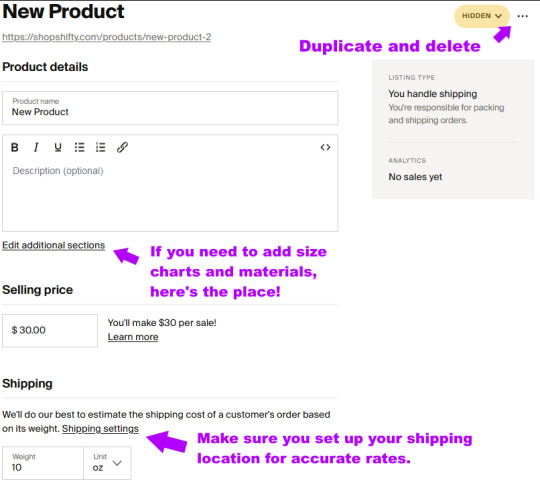
You can customize everything about your product on this page, from adding size and color variations, the materials used to make it, size charts, inventory, and more. Get an accurate weight of what you're selling in its packaging and add that here. Hit save and you have your first listing. Gonna be selling a variety of products? You can duplicate the listing with the meatball menu! Change the name, photos, and anything else that needs changing and have your second listing up in a couple minutes.
Didi protip: I like to put people's reviews right in the listing. Lots of photos help sell your product, but there's nothing like a positive review from fans!
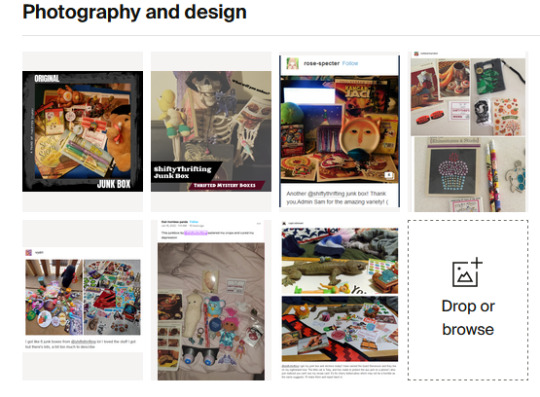
Fourthwall's Collections feature lets me put my Junk Boxes in their own little section where I can set them to hidden or mark them sold out if I get sick or am on vacation. This lets me easily turn the self-fulfilled part of my store off while folks can still purchase print on demand and digital stuff and sign up for memberships.
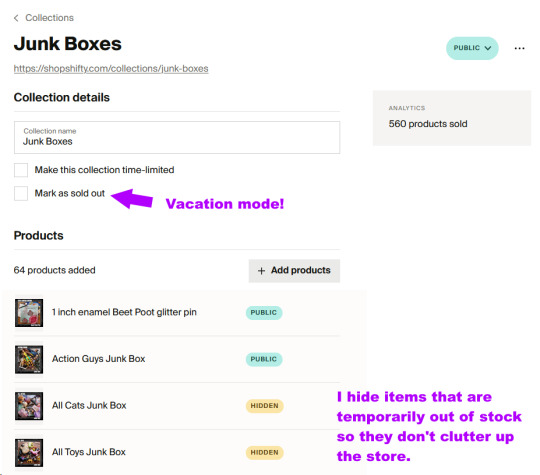
Didi protip: If you are in the US, the US postal service will pick up your outgoing packages free of charge on any regular mail day. Just set up a pickup on USPS.com!
When you've made your first sale, you can either make the label yourself or connect directly to ShipStation through Fourthwall's app integration. That's brand new and I love it so far. My labels pop up in ShipStation about 24 hours after a purchase, giving people a little window of time to adjust their order or make changes before I ship it.
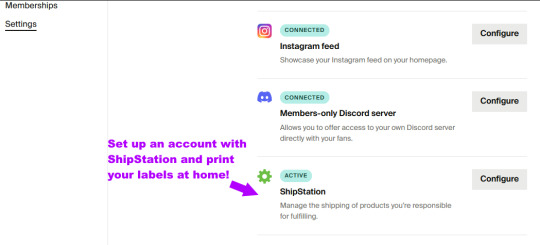
At that point, all that's left is handing it off to the postal carrier of your choice! Boom, you're done!
A final note from me, I moved ShopShifty to Fourthwall so I could have one address for ALL my merch instead of splitting it between Patreon, a print-on-demand store, and the Junk Box store. It's proven to be the best choice I've made in years and has saved me a ton of money in marketplace fees, Paypal's cut, and web hosting charges. This has genuinely been the easiest way to sell my merch!
#fourthwall#I wouldn't praise anything like this that I didn't absolutely love#and I love fw#I'm proud our lil shifty made partner#now I help other people set their stores up
182 notes
·
View notes
Text
Web to Print Ecommerce Solutions: Empowering Your Business with Custom Printing
Organizations are continuously searching for ways of smoothing out their cycles and propositioning a superior client experience. Perhaps the most amazing asset that has arisen lately is the Web to Print Ecommerce Solutions. Whether you're an independent venture, an enormous partnership, or an imaginative business visionary, web to print for you can give a progressive method for overseeing and satisfying printing needs.

What Are Web to Print Ecommerce Solutions?
At its center, Web to Print Ecommerce Solutions permit organizations to offer tweaked printing administrations through an internet based stage. This innovation empowers clients to plan and request printed materials like business cards, handouts, banners, and in any event, bundling, all from the comfort of their work area or cell phone. For organizations, this implies a proficient, financially savvy method for dealing with their printing needs and give a consistent client experience.
The magnificence of web-to-print lies in its straightforwardness. A client can transfer their plan or utilize pre-planned layouts, tweak them, and submit a request. The print shop gets the request straightforwardly through the stage, dispensing with the requirement for this way and that correspondence, smoothing out the cycle, and further developing completion times.
Why Pick the Web to Print for You?
In the event that you're asking why web to print for you could be a unique advantage for your business, think about these key advantages:
Comfort and Availability: Clients can put orders every minute of every day, with next to no geographic restrictions, making it unbelievably simple for them to get precisely the exact thing they need at whatever point they need it.
Customization: The capacity to customize items to your precise details — whether it's a flyer, a bunch of business cards, or marked stock — has never been more open.
Financially savvy: By eliminating in-house printing framework and manual taking care of, organizations can save fundamentally on printing costs, all while offering more cutthroat costs to clients.
Proficiency: With mechanized work processes and request the board frameworks, web to print for you permits organizations to diminish human mistakes, accelerate handling times, and improve consumer loyalty.
Web to Print for Corporate: Changing the Corporate Printing Scene
With regards to corporate printing, organizations require top caliber, steady prints for many materials like yearly reports, advertising security, writing material, and then some. This is where web to print for corporate starts to lead the pack.
By integrating Web to Print Ecommerce Solutions into a professional workplace, organizations can smooth out their printing needs easily. Whether it's overseeing mass requests or guaranteeing brand consistency across different divisions, web-to-print stages give a hearty and versatile arrangement.
Corporate clients frequently have exceptional requirements, for example, multi-area orders, variable information printing (like customized letters or records), and incorporation with other business frameworks. These elements are consistently coordinated into most web-to-print arrangements, making it a significant instrument for associations, everything being equal.
Key Advantages of Web to Print for Corporate
Brand Control: Enterprises can keep up with brand consistency by offering workers admittance with supported layouts, guaranteeing that all written words comply to mark rules.
Diminished Waste and Expenses: By giving workers a simple-to-utilize online stage to arrange just what they need, organizations can eliminate unreasonable print runs, in this way decreasing waste and expenses.
Brought together Administration: Huge organizations can deal with different print demands from different offices through a solitary stage, further developing effectiveness and decreasing managerial responsibility.
Consistent Reconciliation: Many web-to-print arrangements can coordinate with existing corporate frameworks like ERP or CRM, making it simple to oversee requests and track print occupations.
Conclusion
Whether you're a private venture hoping to offer redid items to your clients or an enormous company looking to smooth out your printing processes, Web to Print Ecommerce Solutions offer an inventive and successful arrangement. With a web to print for you, organizations can offer simple customization and prevalent client experience. For enterprises, web to print for corporate changes how printing is taken care of, making it more proficient, practical, and versatile.
#web to print for printer#web to print ecommerce solutions#web to print for you#web to print for corporate#web to print#online print shop software#print shop website software#web to print store
0 notes
Text




So, i don't have a twitter or insta anymore to post my occasional art things on. I suppose i'll be doing that here again. Anyways
Some friends and i are going to try out the fan made Fallout TTRPG, Fallout: Vaults & Deathclaws. Since i hate reading PDFs to learn shit i, of course, did the only logical option left to me. I bound them in to physical books. You know, as one does
3 Dweller's Guides, one for me and 2 for general table use. And 2 Overseer's Guides, one for me and 1 for our erstwhile DM
First time trying out sewn board binding. Big fan! Don't need to fret about your square looking nice and square if theres no square! Tho, probably not the best option for this (TTRPG books) particular use case lol
Also my first time chancing book cloth (home made, fusible web method) thru the laser printer. Saw it on @three--rings blog, this post. Worked great! Def doing that more often. Next time i'm gonna see if it will work with toner foiling
Links to the free system docs and such below the cut
Dweller's Guide
Overseer's Guide
Bestiary Guide
Item Guide
I was gonna link the subreddit as well but they appear to have privated it in the like single week i've been working on this so 🤷♂️

BONUS. IDK if something broke in the upload to Docs or if the folks who made this didn't think about how most printers don't actually print all the way to the edge but somewhere somehow these files got all fucked up from a printing perspective. Also, the page numbers aren't formatted right either. Also also, 9 pt font? For nearly everything?! Do you hate players? Y'all, it's a digital file. Your not saving paper by using tiny font and tiny margins
I spent a million years battling my personal nemesis, tables, to get this into a printable state. I missed a page and didn't notice till i was taking these pics. A whole chunk of this page got cut off in the bleed 😭
If y'all, the creators, by some wild fluke actually manage to see this post. I have some... notes
UPDATE: Spoken to the creators now. Apparently there was a DOCs update a few months ago that mucked some stuff up. Terribly unfortunate
11 notes
·
View notes
Text

i forgot the time while crafting a reasonable facsimile of a web browser to frame each page of Ted the Caver, which I think I will print on magazine paper. my printer will hate me, but i do have more black ink should the need arise. this thing lasted me about three years without filling before so hopefully... it would be nice not to buy more ink
trying to replicate an internet experience as a book is hard
8 notes
·
View notes
Text
Worldbuilding: Language and Information Transfer
For well over a thousand years, the lingua franca of East Asia was Classical Chinese. From the Korean Peninsula to Japan to the Ryukyus to Lan Xang (Laos) and Dai Viet (Vietnam), educated scholars were expected to read Chinese characters. On the upside this gave scholars across half a continent the ability to handle conversations between cultures even if they couldn’t speak the language, and access to anything written from various dynasties in China.
Especially during the Ming Dynasty, this helped support a thriving printing business in China itself, everything from the Classics to agricultural treatises to racy literature and pulp like The Journey to the West. On the downside - it took time, effort, and no small amount of money to afford to learn those characters, especially if your native language was completely different. Which led to, among other things, a large percentage of the population (for the time) of the Joseon Dynasty being able to read... in Hangul. With absolutely no access to most of the published books that were in Chinese.
(Yes, there were books published in Hangul, but the volume was - less. A lot less. With most published not by independent printers, but the government and various wealthy nobles. You can guess their priorities were not the fun stuff. And sometimes not even the useful stuff.
That said there actually is a Korean translation of The Journey to the West, and if the dating on that ancient manuscript is right the original story may have been written even earlier than we thought. Cool.)
If you want an idea to travel in the world of your story, you have to know a bunch of things. A few of them are, what language it’s written in, how accessible is that language to anyone outside its point of origin, and - crucially - how is that language perceived by those who don’t speak it?
Yes, I’m assuming a written idea here; though a lot of this still applies if it’s oral word-of-mouth or some kind of electronic transmission. It’s still an idea codified into a symbolic form like words, or humans (or human-like beings) wouldn’t be able to understand it in the first place.
(If your story is about critters so far off humans they don’t have word-forms, idea transmission is already going to be very, very hard without any of these considerations.)
So. What language is your idea in? Certain concepts are very hard to get across in specific languages. For example, “I come from a planet but not the planet” doesn’t work well in Mandarin or Japanese, where articles like “a” and “the” just... aren’t there. Judicious rewording is in order, which makes the translation not direct word-to-word, which... yeah, that’s a whole hovercraft full of eels right there. In a fictional setting you may get around that by saying everyone’s speaking the local equivalent of English. If, however, they’re definitely not - read up on a language like what you’ve got in mind, and do some web-searching on translation stumbles!
Which leads to, how accessible is the language? If you’ve got a lost star explorer, a stranger washed up on a fantasy shore, or an isekai protagonist, the number of people who speak the language may equal one. If it’s a language of scholars, you might not have anyone in a small village who speaks it, but odds are some headman will at least recognize it and send for more qualified help. If it’s a language of the enemy....
Well, that’s point number three. Is this a language of the local people’s enemies? That can get tricky - there was a point in the history of Joseon where members of the royal family were forbidden to learn the Jurchen language, and only translators were supposed to deal with such an uncivilized tongue. Is it just a language of people not taken seriously? Think of Chinese in the Old West, for one; how many people who weren’t Celestials knew it? Is it just, well, kind of rare, like Basque in nineteenth-century NYC?
If you want your character to spread ideas that change the world, do it! But if you pay attention to how ideas travel in real life and history, and echo that in your story, it’s going to ring a lot more true.
...Besides. Every fantastic world can use more bookshops!
12 notes
·
View notes
Text
okay! percontation point/rhetorical question mark investigation has been done! i am putting this under a read-more because it's super long but if this causes accessibility issues please tell me lol (i don't remember if it does but i am trying to make my original posts more accessible so...)
tl;dr for anyone who doesn't read the whole thing, i basically just looked through some really old scans to prove the origins of the percontation point (and that sounds really boring but maybe it's interesting? it would be more interesting if progressive punctuation would email me back lol)
. ? ! , : ; ' " – — - · ... [ ] { } ( ) / < >
22/22
bonus:
⁂ * † ‡ ⁓ ~ & ⸺ ❦ ⸮ ‽
11/20
so basically, this is related to this post* i reblogged a bit ago because something about the graphic on it was bothering me... here's the graphic in question btw

[image id: a picture with nine punctuation marks in three rows of three. the first row has (from left to right) the acclamation point which looks like an exclamation mark with two stems pointing in sort of a v shape from the dot, an exclamation comma which looks like an exclamation mark with a comma instead of a dot, and an interrobang which is a question mark with an exclamation mark laid over it. the second row has the love point which looks like a question mark with two of the top parts put together to form a heart, a friendly period which looks like a period with a curved line underneath it, and an authority point which looks like an exclamation mark with a curved line perched atop it. the third line contains a rhetorical question mark which is a backwards inverted question mark, a doubt point which looks like a question mark with the top part shaped more like a cursive z, and a question comma which is a question mark with the dot replaced with a comma. end id.]
so, i've done a lot of research on irony punctuation throughout my days—whether it be to argue with a reddit comment or just for punctuation day reasons—and i would say i know a lot about irony punctuation (of which rhetorical questions fall under i guess? according to wikipedia at least)
so, that post was bothering me because the rhetorical punctuation mark i know is the percontation point (⸮) invented by henry denham in the 1580s & the mark used on the post was an inverted form of this
now, here was the easy investigation on who made this graphic. i already said so in the tags of the post, it was by progressive punctuation; they even have a specific page on their website with this information. now when i saw the rhetorical question mark they used, my first thought was, "maybe they're talking about a different rhetorical question mark" but then...
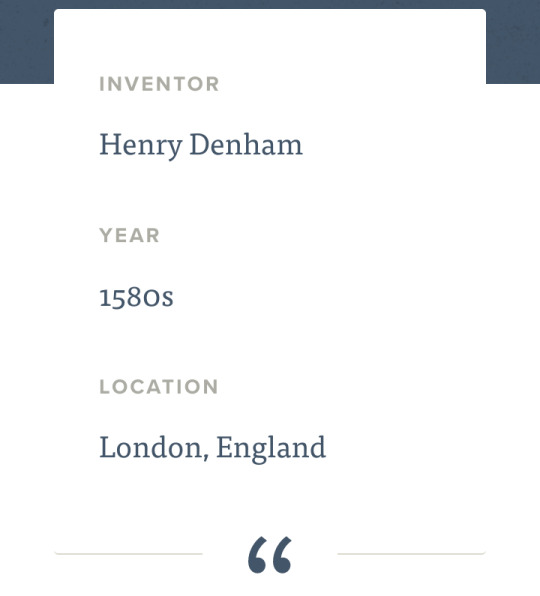
[image id: a screenshot from the progressive punctuation webpage on the rhetorical question mark. it says that the inventor is henry denham, it was invented in the 1580s, and it was invented in london. end id.]
see, so here's the real problem. they're citing it from henry denham when his mark doesn't look like that. so then i did the logical thing and tried to find where henry denham even printed this thing in the first place. and that's where the fun(?) part begins.
❦
so, i have a range in the time periods i'm looking for (⁓1580–1589) and i have a name (henry denham). first question: who's henry denham?
the answer isn't that interesting but it's contextually helpful. henry denham was, suprise suprise, a printer from england. allegedly he's iconic but the most i can find about him is that he's a printer and he invented the percontation point. one website (link) claims the use of the point to be from around 1575–1625 which is kinda not 1580s but. i don't know what the deal with that is. (if i figure it out, i'll explain it) and attributes it to either henry denham OR the translator anthonie gilbie (and denham was apparently his printer?? idk man this is a whole web of shit)
so, who's anthonie gilbie? firstly, the only things i could find were for anthony gilby and not some guy with a weird -ie but that's not really relevant because the guy is also a translator from 16th century england so like. i don't think that's likely they were two separate people. so, anthony gilby is a radical puritan who translated the geneva bible into english. the geneva bible is one of the oldest english language bibles, predating the king james bible by around 51 years so i guess that makes anthony gilby pretty important. shakespeare used it, cromwell used it, milton used it, it's a big deal. gilby only translated the old testament, another guy called william whittingham translated the new testament so that does narrow down the thing slightly
but also, i'm not reading the fucking bible again especially not in old english so. i want to narrow it down more.
and that means we're going back to henry denham ! yay! since the source i was using was the only one that provided anything at all on the origins of the percontation point, i went back to it to see what else it had to say. and what it had to say was that there were two examples, one was the psalms of david† (in roman font) and the other was a book called tragicall tales (in blackletter font). so with those being our only two leads, we have to follow them.
⁂
so i search up "psalms of david 1581" to see if i can find a scan. and the first thing i find is a 1581 enchiridion on the psalms of david (1st edition) that's 795$. yikes. luckily i don't think that's the one but that certainly did freak me out since it was from the same year and shit. anyways. the online geneva bible has 150 chapters of psalms so we'll just talk about tragicall tales first
now what the absolute f⸺ is tragicall tales? and to that i say. well. i don't really know.
except, jk i do apparently know now! tragicall tales was a novel written by a man called george tuberville‡ and published in 1587, and while i can't find any direct statements that it was denham that invented it, it is in blackletter font and printed the same year as the article said so... i think it's a safe assumption to make that this was denham's work. the next thing to do would be to find tragicall tales which i wasn't too excited for given the last time i tried to find a book for this it was almost $800 dollars.
but i struck gold. not only did i find a copy on archive.org (link), i also found a typed out version (link) but the punctuation there is badly transcribed in my opinion so. take what you will from it but. idk man i think i found the right stuff. so without further ado:
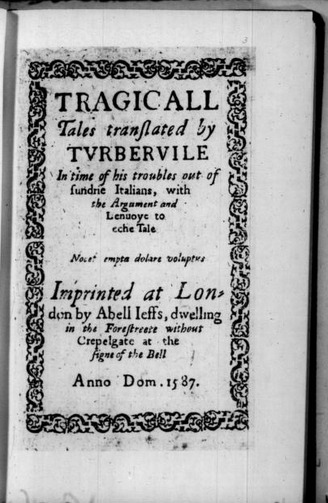
and while this is probably the oldest crustiest scan ever and also 400 pages long, i did find something! yay!


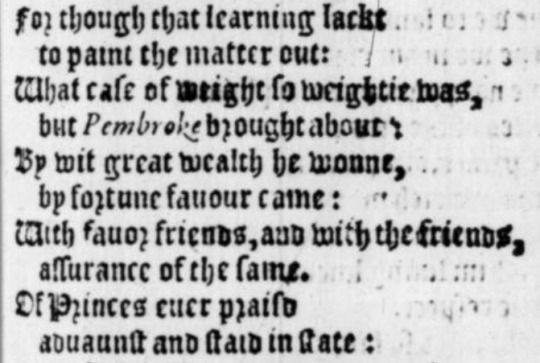

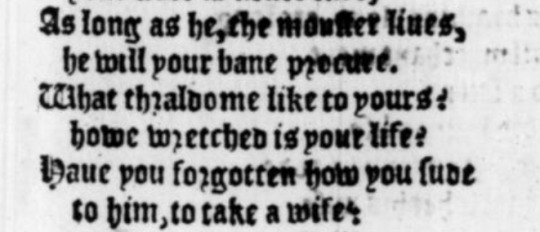
[image id: five screenshots from the internet archive scan of tragicall tales, each containing a backwards question mark aka a percontation point. end id.]
now, i know looking at this, it's kinda hard to tell what's going on due to the quality of the scan, typeface, and other stuff, but i'll break it down real quick. the percontation points here are after the words wife, fame/same (it's probably a long s but it looks more like fame if that helps), about, will, and wife again. i tried to get a few that have normal question marks in them to prove what i'm talking about (they're in the second, fourth, and fifth screenshots) you see em? cool, because my eyes might fall out of my face with how long i had to look for these. good lird.
but what about the inverted one? now, i did scour this as hard as i could and the closest one i could find was this

[image id: a screenshot from tragicall tales reading "la mia donna bella è buona". end id.]
but at the same time, the typed version has that as an è and not punctuation of any kind and while i don't agree with the typed version 100% i do think that makes more sense. so there. that's all we got out of tragicall tales. back to psalms!
❦
i was very excited to read this.~ (that's a snark mark btw. i was not) i already had to read the bible once recently for ... reasons? (i'm not super religious) and that was the new american bible not a fucking bible in middle english. so. this is somehow worse. and yet. i ended up trying my best to find it
now seemingly it slipped my mind that unless there was a scanned copy of an original it would likely not have the mark i was looking for because i looked for ages. it was a fucking nightmare. psalms sucks especially geneva psalms. but, archive.org came to my rescue yet again. and let me tell you. it still didn't help
firstly, the geneva bible looks like this.
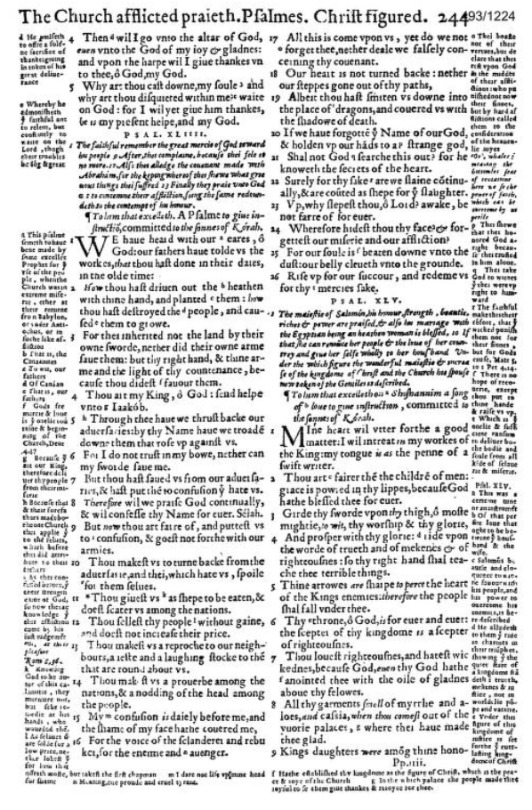
[image id: a screenshot of a scan of the geneva bible. it has two columns of text along with notes off to the side and footnotes. it is written in middle english. end id.]
if you're lucky (?) the geneva bible looks like this
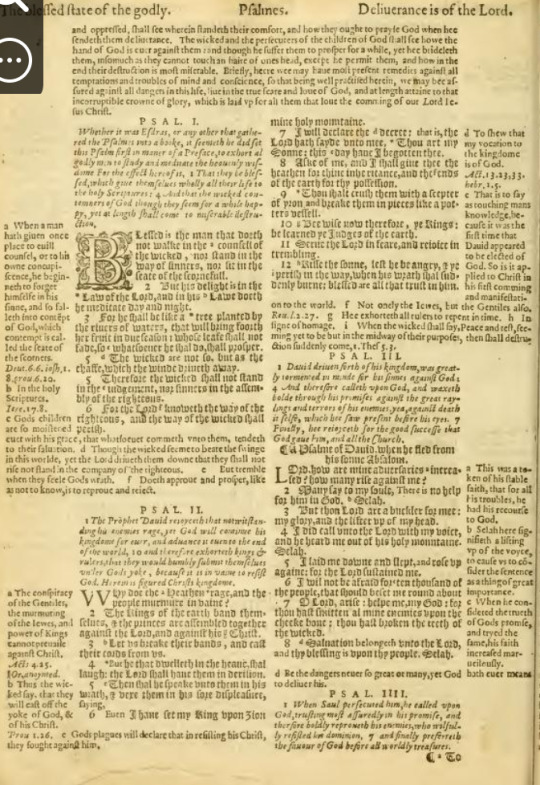
[image id: another screenshot of a different scan of the geneva bible with a similar layout but it is more yellowed and fancier. end id.]
yes, i looked at two different scans of the same book sue me. or don't preferably. but this did give me one clarifying idea of what i was doing wrong. the article i had referenced said that the question mark was in roman font. the main text of the geneva bible seems to be in blackletter. so i had to look in the side columns. and look in the side columns i did. and yet, that didn't seem to help any either (if anyone wants to look the first one is linked here and the second is linked here; i don't think they're in there though in hindsight)
and yet, there was one last place to search. the psalms of david truly opened and explained by theodore beza. a completely different text by anthony gilby (and his name has the -ies in it in the scans i can find of this so that's also a good omen) and it's still david psalms so i hunted it down. and great news
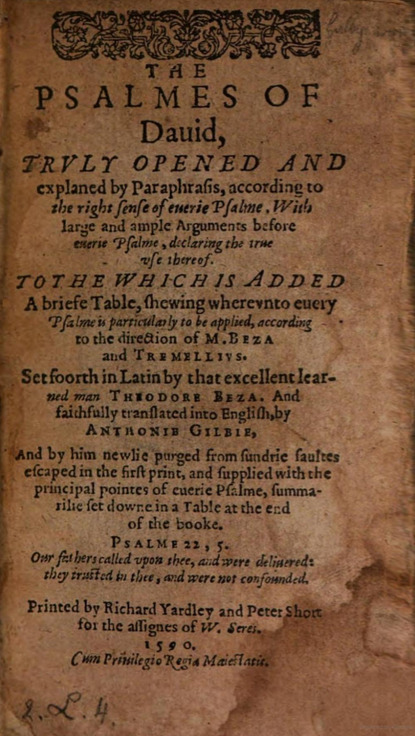
[image id: a picture of the first page of the psalms of david truly opened and explained by theodore beza. it has the translator listed as anthonie gilbie and printers listed as richard yardley and peter short. it is extremely brown and looks very old. end id.]
it's an even older looking book! (though to be fair, the geneva bible was older they probably just reprinted it more often) (i found it here if that's anything)
quick intro to people: theodore beza was a french calvinist who lived in geneva. he's not really important to this story. peter short and richard yardley were printers who worked for the stationers' company (aka the worshippers company of stationers aka the worshipful company of stationers and newspaper makers) and i will get back to that.
so now we're getting... somewhere? i mean, this book does have cool wood cuttings right?
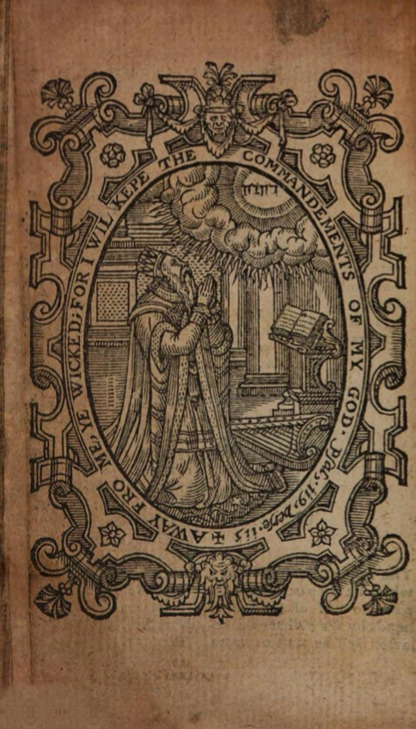
[image id: a picture of a wood cutting of a man kneeling in front of a book, with light and a fancy frame. end id.]
but does it have percontation points?

[image id: a picture from the psalms of david truly opened and explained by theodore beza. it has two percontation points in it. end id.]
oh hell the fuck yes it has them. look at that! two of em right there! that solves that mystery. and i didn't even have to look at the geneva bible. but it's fineee <- didn't want to look at the geneva bible but whatever
but where's henry denham?
like first of all, the article i was using said "1581" for the psalms thing so either that's a different psalms with percontation points in it or something got screwed up because also... the printers are names on here and neither of them are denham, especially considering the book came out in 1590 and denham quit publishing in 1589 (or maybe 1591? it's unclear). they also confusingly say he was succeeded by short and yardley and while i can't find anything about yardley, i do know that denham also worked for the stationers' company so they were at least colleagues in the printing business . so this isn't denham is seems but also... he did make the percontation point in 1587 in the tragicall tales so i don't think it's a question of inventing it, that was probably still denham. there might be another psalms out there with percontation points in it but who knows? i really don't think we need more proof when we say that this -> ⸮ is the percontation point :}
⁂
so where the fuck did this other one come from‽ because if i know one thing it's that progressive punctuation has generally been right... so what's the deal with that?
of course i did the only logical thing and emailed them. i hate emails but i did it anyways. for you (if people don't reblog this just for the sheer effort i will be mildly saddened. here's a secret interpunct for you for reading all this shit. -> ·)
and of course, i didn't get an email back immediately which was disappointing. in fact, as i post this, i still haven't gotten an email from them (i waited like a week but if they do email me back i'll update you)
so anyways, then what did we learn if i never got an email back? how to do dumb research for a day and learn absolutely nothing new? i mean i actually kinda don't know how to conclude this now that i think about it. i guess we learned that henry denham probably invented the percontation point and that maybe we should start using it more often. and that you should check infographics you see online, i guess? maybe don't check them this intensely though because. that was a lot. :{
* don't you dare go harass the op i swear i will kill you if you do
† apparently these aren't by david according to most scholars but whatever
‡ unrelated as far as i am aware to tommy tuberville, a u.s. senator from arkansas. he seems to be kind of an asshole but i'm not from arkansas so i don't really have an opinion
#original posts#punctuation#okay i finally waited the seven days i promised hope this is interesting to anyone but me lol
53 notes
·
View notes